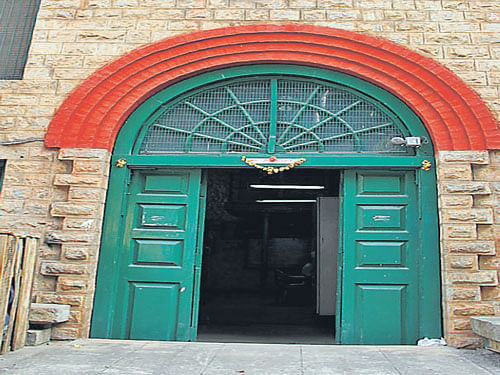
A time capsule
On the corner of MG Road and Dickenson Road, there is a building that, much like Harry Potter’s Leaky Cauldron, does not seem to register on people’s eyes. And yet this little building has a big say in Bengaluru’s place in the light, if not in the sun.
Karnataka’s earliest power generation scheme – likely India’s second oldest – was the Kaveri Electric Power scheme at Shivanasamudra. This was instituted to supply electricity for the mining operations at Kolar Gold Fields from June 1902.
The capacity was increased in 1903, following which the plant was generating excess than what was required at Kolar. And so, a plan was conceived for providing electric lighting in Bengaluru. On August 3, 1905, Namma Bengaluru’s first electric lights were switched on! Within a few years, many parts of the city were electrified. And this is where our little building comes into the picture.
Electricity that is generated at the power station is transmitted at high voltages to various places. For it to get to your house, its voltage first needs to be stepped down. Enter ‘B’ Station, a distribution substation that transfers power from the transmission lines to the distribution system of various areas. At ‘B’ Station for example, voltage is stepped down from 66 kV to 11 kV before being distributed to transformers in the areas around MG Road.
Old world charm
This substation is a typical colonial building. Early colonial-period industrial buildings were quite attractively built. Later, as electricity use and therefore substations became more commonplace, the buildings associated with electricity generation and distribution became simpler and more functional. ‘B’ Station dates from the time when substations had not yet become dull and drab constructions. It is a handsome little structure, with a two-storey elevation and topped by a gabled roof.
The first thing you notice about the building is its brown stone, which provides a nice foil to the dark green doors and windows with their red brick recessed arches. The roof is painted blue and attractively fringed with a lace-like bargeboard. Just below the roof is a green-coloured round ventilator, framed again in red brick.
The corners of the building are accentuated with quoins – projecting blocks of long and short stones that run along the entire edge. Overall, the building put me in mind of a rugged fairy tale cottage more than any industrial building, except for the decorative board over the entrance which bears the legend “Bangalore Electrical Supply; ‘B’ Station,” followed by the year it was built, 1907. If anything, the inside of the building is quite as interesting as the outside, primarily because nothing has changed since it was built. The equipment inside is all modern now, complete with flashing red lights! Pictures of Ganesha, Ambedkar and Gandhiji adorn the walls. But the building itself remains almost exactly as it was when built.
Naming the station
If like me, you wondered about the nomenclature, it turns out that it is not something unique to Bengaluru. Under the British system, successive generating stations and substations in a grid were often simply named after letters of the alphabet.
So you have the Hams Hall A and Hams Hall B substations near Birmingham, for example, or the Croydon B substation near London. Bengaluru, too, has an ‘A’ Station which is near Ananda Rao Circle, and a ‘C’ Station, which is near Cantonment Railway Station. Both are somewhat similar to ‘B’ Station. The ‘A’ station was enlarged and renovated in the 1920s.
Earlier this year, ‘B’ Station won a Heritage Award from the Indian National Trust for Art and Cultural Heritage. Jury members were unanimous in their choice of this building for its historical value, functional continuity, and architectural integrity. As jury member architect Anup Naik said, “It deserved the award also for retaining its character in an ever
changing surrounding built environment.”